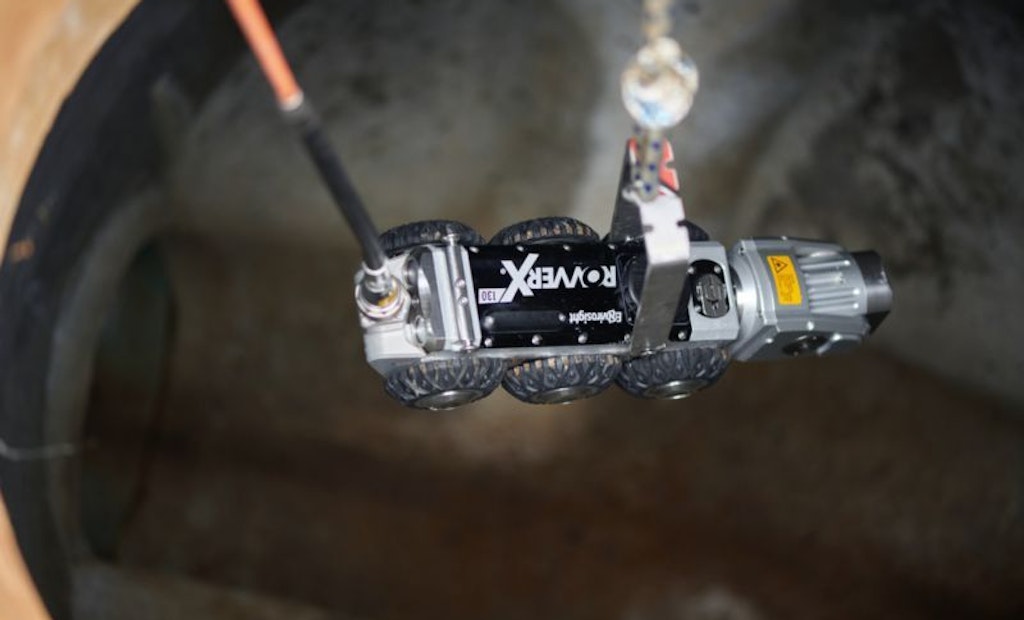In a world increasingly reliant on image technology to solve complex environmental challenges, the use of robotic assistance in maintaining and inspecting water and sewer infrastructure has proven not only revolutionary but also essential. The recent initiative by the U.S. Environmental Protection Agency (EPA) in Lahaina, Hawai'i underscores the vital role that pipe crawling robots play in ensuring the integrity and safety of municipal sewer and water lines, particularly in the aftermath of natural disasters.
EPA's Work in Lahaina
The devastating Maui wildfires in August 2023 left the the town of Lahaina in a state of widespread destruction, including significant damage to its critical wastewater and drinking water infrastructure. As a part of the relief and rebuilding response, the EPA inspected all 97,749 linear feet - over 17 miles - of Lahaina's lateral sanitary sewer lines (U.S. Environmental Protection Agency 2024).
Image: The town of Lahaina after the destructive wilderfires (image source: AP News)
Using pipe crawling robots equipped with cameras, the EPA was able to clear debris, including sediment, rocks, rags, and grease, from the sewer lines in a period of approximately one month. These robots simultaneously provided video footage to assess the conditions of the lines, identifying areas impacted by the fire and allowing the County of Maui to prioritize emergency repairs and protect the wastewater treatment plant from excess water infiltration through damaged pipes.
The Significance of Robotic Technology in Infrastructure Inspection

Image: The Envirosight ROVVER X sewer inspection crawler being lowered down into sewer lines for inspection (image source - Municipal Sewer & Water Magazine 14 Nov 2023, accessed 5 May 2024)
The application of robotic pipe crawlers in Lahaina's sewer line inspection and the cleanup process highlights several key advantages of using this technology:
1. Efficiency: The EPA was able to evaluate all 97,749 linear feet of lateral sanitary sewer lines in approximately one month—a task that would have been virtually impossible without the use of pipe crawling robots.
2. Safety: By employing robotic assistance, human exposure to potentially hazardous environments and materials is significantly reduced. This is particularly important in post-disaster scenarios where unknown dangers can lurk within damaged infrastructure.
3. Precision: Pipe crawling robots can access and assess areas that are otherwise inaccessible or dangerous for human inspectors. Their advanced imaging and data collection capabilities ensure a high level of precision in identifying and evaluating damage.
4. Overcoming Resource Limitations: According to Shayne Agawa, Director of the County of Maui Department of Environmental Management, the EPA's support and use of specialized equipment were critical in overcoming the resource limitations of the county (U.S. Environmental Protection Agency 2024). This demonstrates how robotic technology can allow groups to better allocate other resources to where they can be used most.
Robot's On-Board Camera Resources
The pipe crawling robot needs camera vision as a critical component of its functionality to perform sewer remote visual inspection (RVI) applications. Sewer pipes by nature are dark, confined, and wet -- sub-par environments for cameras to operate in. Fortunately, the original-equipment-manufacturer (OEM) zoom block camera, or a remotely controlled camera with optical and digital zoom and light exposure features, makes remote vision possible for the pipe crawler. 
Image: A 10x optical, 12x digital, zoom OEM block camera (The KT&C ATC-HZ7810C-A 10x Zoom Rolling Shutter Block Camera)
OEM block cameras have excellent high and low-light performance with wide dynamic range functionality. Coupled with noise reduction processing, these cameras create a clean and crisp image for the sewer inspectors to perform their work. The camera functions are controlled from distances through communication protocols, and the camera bodies are protected inside robust, environmentally-sealed housings making them ideal for sewer robot crawling systems.
Looking Forward
As the EPA continues to provide technical assistance to the County of Maui by conducting drinking water sampling and further assessments, the role of robotic technology remains at the forefront. The agency's efforts to clean, assess, and repair the water infrastructure exemplify a broader trend towards integrating advanced technologies in environmental management and disaster recovery.
The importance of embracing technological solutions like pipe crawling robots, and the cameras that guide them, cannot be understated. Increasing environmental disasters and challenges call for more technology integrations ensuring the resilience and safety of our critical infrastructure, safeguarding public health, and supporting the recovery of communities affected by disasters.

